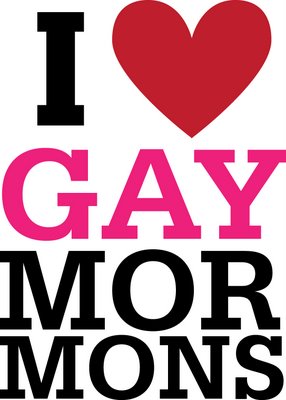Ignoring the big Mormon question at gay pride parade
 There was a gay pride march the other day in Utah and The Salt Lake City Tribune, in it's basic report about the event, certainly didn't shy away from publishing a provocative lede:
There was a gay pride march the other day in Utah and The Salt Lake City Tribune, in it's basic report about the event, certainly didn't shy away from publishing a provocative lede:
Before the drag queens in heels danced across Main Street, more than 300 members of the LDS Church left Utah Gay Pride Parade spectators in tears Sunday morning. One Mormon father turned to the crowd and thanked people for forgiving him.
The group, Mormons Building Bridges, said they wanted to send a message of love to the state’s LGBT community, a message they believe is compatible with their faith.
Emily Vandyke, 50, carried a sign with the words from an LDS children’s song: "I’ll walk with you, I’ll talk with you. That’s how I’ll show my love for you."
Several blocks along the parade route, she embraced a tall woman weeping at the edge of the crowd who said, "Thank you."
To understand this act of public witness, it was crucial that the story mention -- at some point -- what the Church of Jesus Christ of Latter-day Saints actually teaches on issues of sexual morality, and homosexuality in particular. The story does that quite clearly, although it is hard not to notice that the story includes zero input from any Mormon leaders when it comes time to defending those teachings.
Sadly, this is becoming quite normal in this brand of advocacy journalism, even when it appears in the news pages of a mainstream daily newspaper. Who needs to talk to both sides in a debate of this kind? Perhaps that kind of balanced journalism has become too old-fashioned.
The Church of Jesus Christ of Latter-day Saints does not consider same-sex attraction a sin, but sexual relations are only acceptable within the marriage of a man and a woman.
Some parade viewers talked about how their homosexuality had caused them to leave the church. How they might have remained members if the LDS faith were more tolerant.
Carolyn Ball, a 48-year-old lesbian from West Jordan, said she was excommunicated in 2000. "I lost everything I loved because I came out," she said.
And so forth and so on. The entire story is told through the voices of believers on one side of the story.
Like I said, that has become all too normal. What struck me in this story is that the Tribune team failed to ask the leaders of Mormons Building Bridges one totally essential question: Does their organization, in fact, reject or even actively oppose the teachings of their faith on issues of sexuality, marriage and family life? How do you write this story without covering that angle?
It is possible, of course, that members of Mormons Building Bridges still accept the church's doctrines, but believe they have been poorly practiced. This organization could, in other words, not be pro-gay rights, but, to adopt language from the Cold War era, it might be anti-anti-gay rights.
There are a number of doctrinal possibilities here, none of which are addressed. It is also interesting to note that the exact same hole exists in the advance feature that the Tribune team produced about this event -- click here to read that. The closest the story comes to asking this crucial question is this exchange with Erika Munson, the founder of Mormons Building Bridges:
The Church of Jesus Christ of Latter-day Saints teaches that it is no sin to have same-sex attraction, but it condones sexual relations only within the bonds of marriage between a man and a woman. The Utah-based faith also helped pass California’s Proposition 8, which limited marriages in the Golden State to unions between only men and women.
“I felt that there must be people like me,” Munson said, “who are committed to the church, who believe in the gospel and want to live Jesus’ word, which is, ‘love one another.’ ”
Munson’s group is not affiliated with the LDS Church or any political party, and though it started just a few weeks ago, it’s been gaining steam through social media.
Does that crucial phrase -- "who are committed to the church, who believe in the gospel" -- include accepting the church's moral teachings? Was that question never asked? It is also crucial to note that the advance story included no information about this event or movement drawn from Mormon authorities or even other local Mormons who have decided not to join Mormons Building Bridges -- such as, perhaps, members or leaders from Munson's own local stake, or congregation.
What we have here are two alleged news reports, as opposed to columns or editorials, build on commentary from one side of one of the hottest religious debates in the nation. These reports also omit a crucial question that would have helped flesh out the beliefs of the people at the heart of the story.
Why would the Tribune team fail to ask that crucial question or to print the answer if the question was asked?